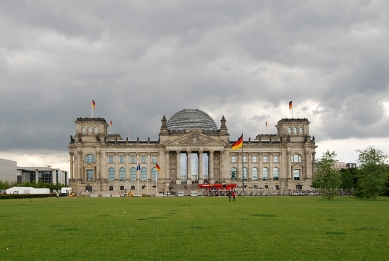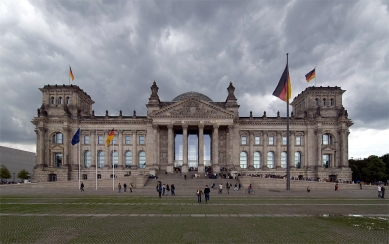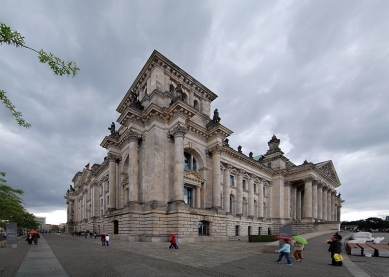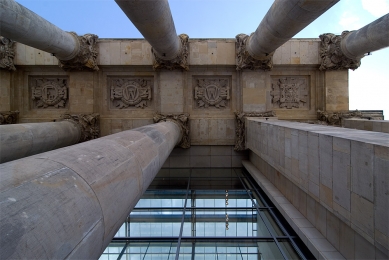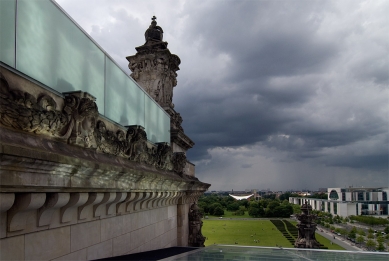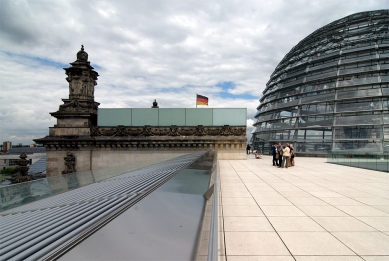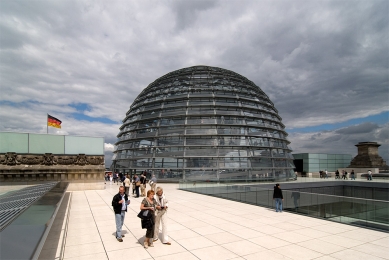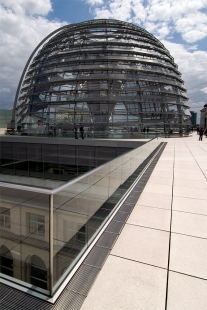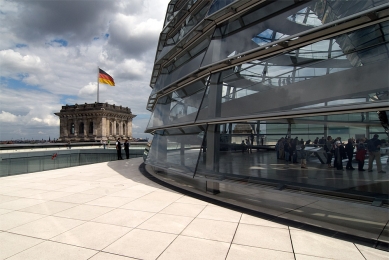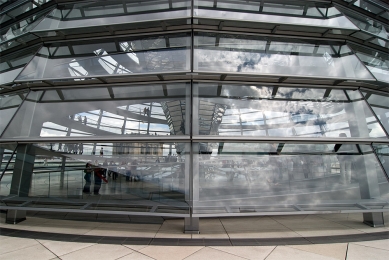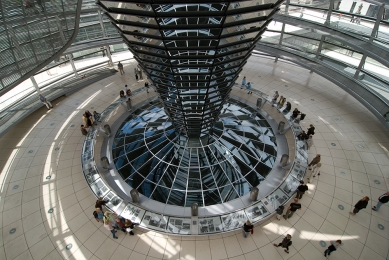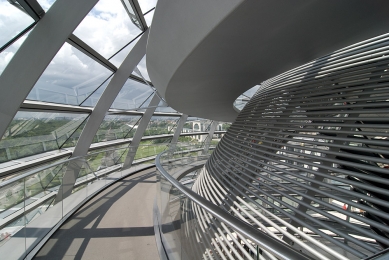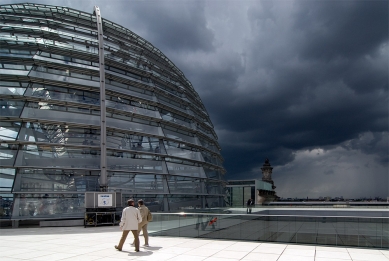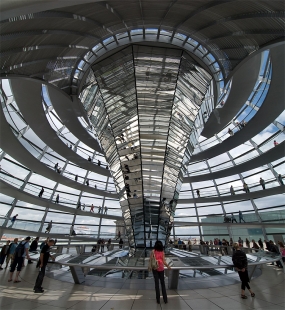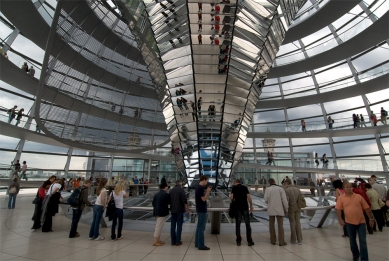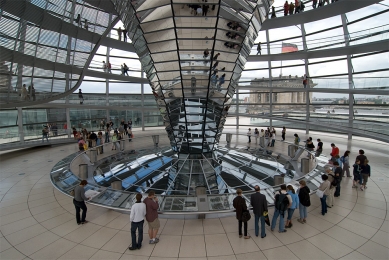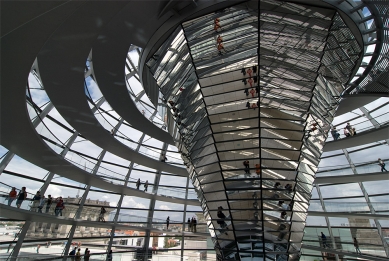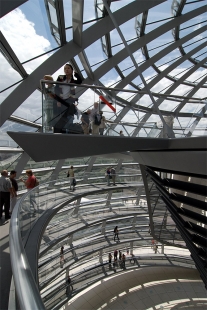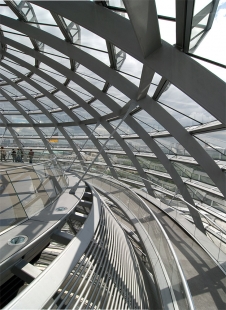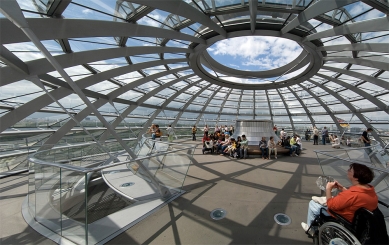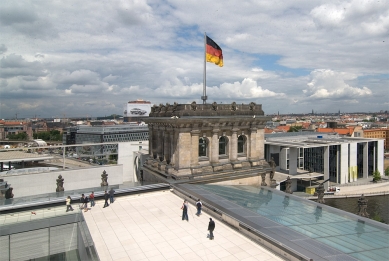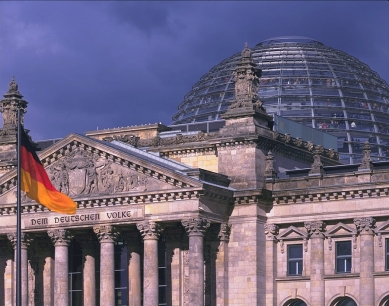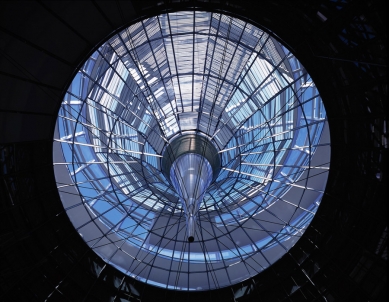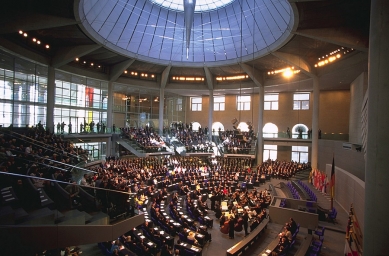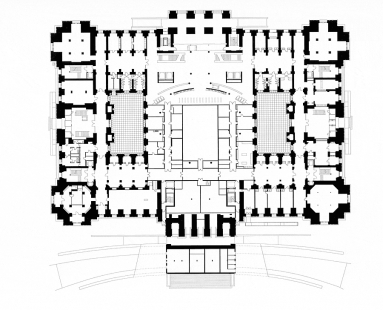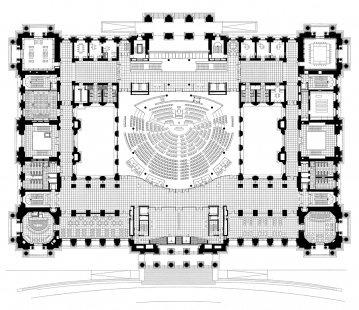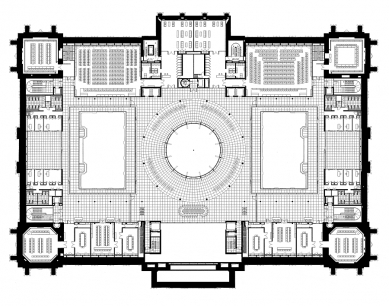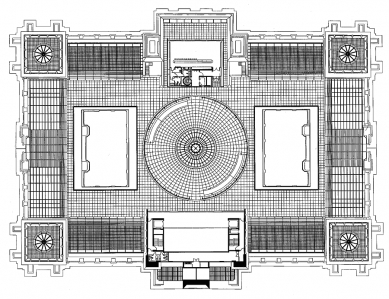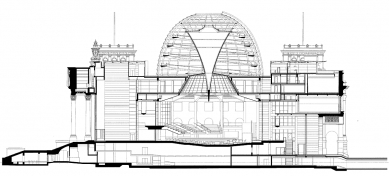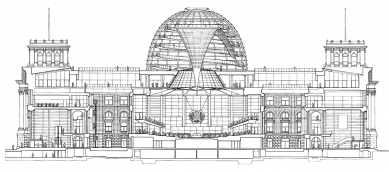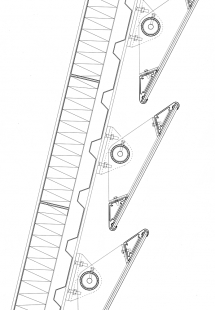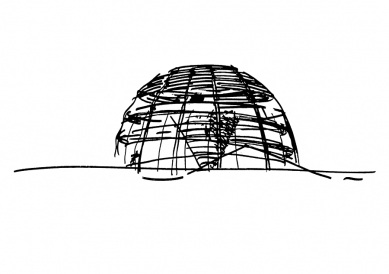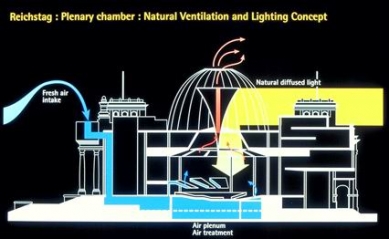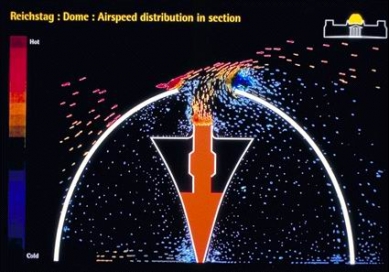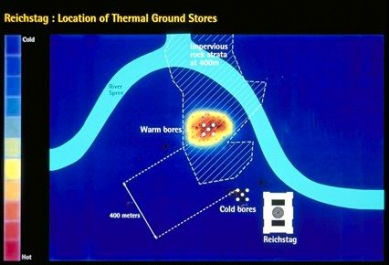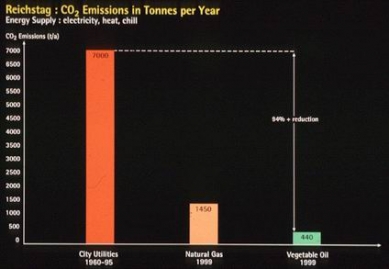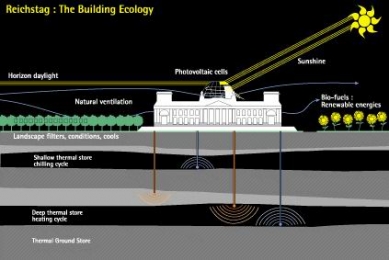
Reichstag, New German Parliament
German Bundestag

 |
As found, the Reichstag was mutilated by war and insensitive rebuilding, with surviving nineteenth-century interiors concealed beneath plaster linings. Peeling away these layers revealed striking imprints of the past, including graffiti left by Soviet soldiers. These scars are preserved and historical layers articulated allowing the Reichstag to become a living museum of German history. The reconstruction took some cues from the old Reichstag; for example, the original piano nobile and courtyards were reinstated. In other respects it represents a complete departure: within its masonry shell it is transparent, opening up the interior to light and placing its activities on view. Public and politicians enter together through the reopened formal entrance. The public realm continues on the roof in the terrace restaurant and the cupola - a new Berlin landmark - where helical ramps lead to an observation platform, allowing the people to ascend symbolically above the heads of their elected representatives in the chamber.
The buildings energy strategy is radical. It uses renewable bio-fuel refined vegetable oil - which when burned in a cogenerator to produce electricity is far cleaner than fossil fuels. The result is a 94 per cent reduction in carbon dioxide emissions. Surplus heat is stored as hot water in a aquifer 300 metres below ground, and can be pumped up to heat the building or to drive an absorption cooling plant to produce chilled water. This, too, can be similarly stored below ground. These modest energy requirements allow the building to perform as a power station for the new government quarter. The Reichstags cupola is also crucial to its lighting and ventilation strategies. At its core a light sculptor reflects horizon light into the chamber, with a moveable sun-shield blocking solar gain and glare. As night falls, this process is reversed. The cupola then becomes a beacon, signalling the strength and vigour of the German democratic process.
Foster + Partners
0 comments
add comment


